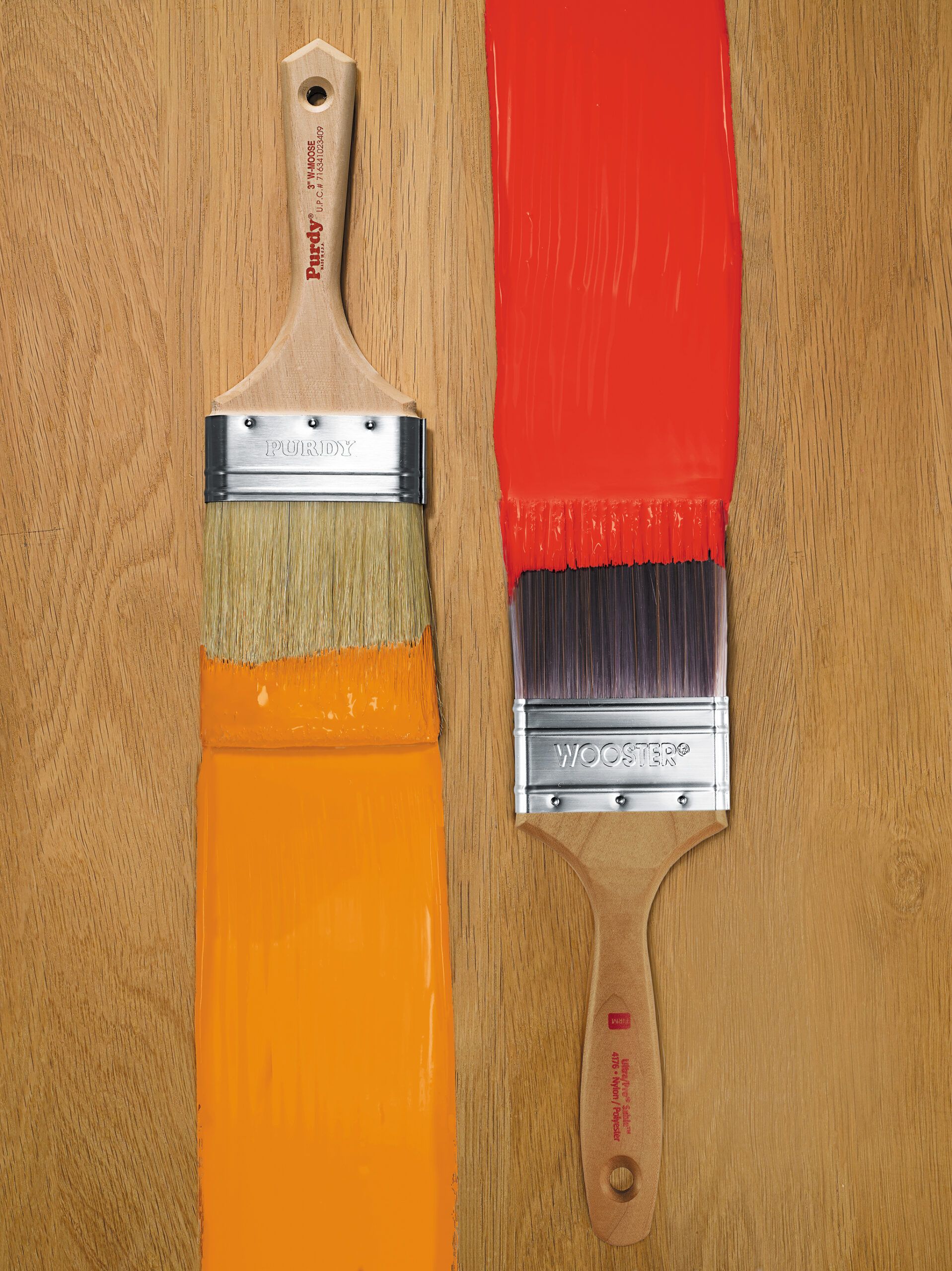Paintbrushes
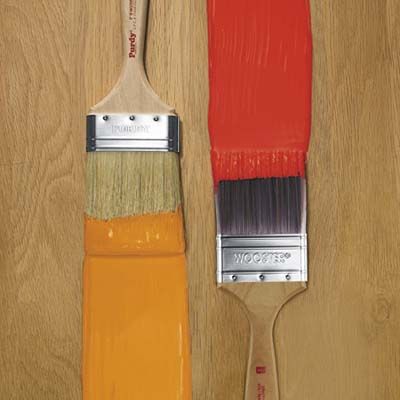
Rollers and sprayers may be fast, but fine woodwork deserves the attention that only a brush can give. The slight imperfections left by each pass of the bristles give the job a warmer, richer feel.
Brushes are a necessity on most paint jobs for their ability to reach tight corners and cut in along trim. Moistened by a dip in fresh paint, good bristles line up to form a sharp tip that traces around sash and sill, defines the edge of the wall and ceiling, and lays paint over a window muntin without spattering the glass.
Only a quality brush can pull off such feats. So return the favor by cleaning and combing it out after every use, then wrapping up the bristles in the clever origami-like keeper they come in.
Acrylic paints, which account for more than 90 percent of sales, go on best with a synthetic brush (right) of nylon and polyester filaments. Approximately $17, Wooster Brush
Natural-bristle brushes (left) have traditionally been used to apply oil paints, polyurethanes, and varnishes, although a new class of oil-friendly synthetics is now challenging bristles’ dominance in this realm. Approximately $22, Purdy
Hog Bristle
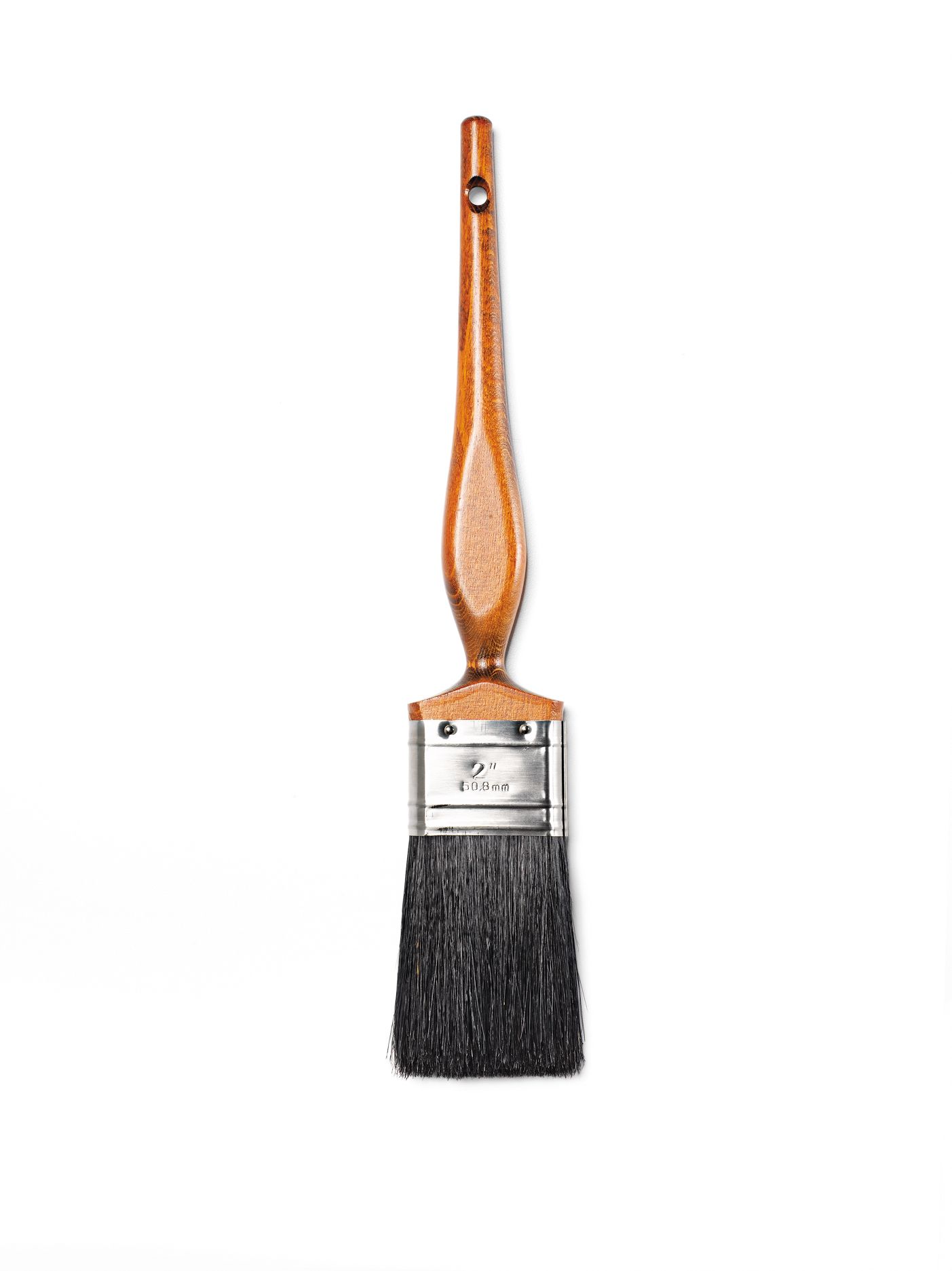
All animal bristles have naturally flagged tips (think split ends), which hold oil paint in the brush’s edge and release it throughout the stroke instead of all at first contact. The black China bristle seen here is durable and is best for coating rough surfaces, like siding and decks. The white China bristle (previous page) is softer and leaves fewer brush marks. Use it with with glossy enamel paints, varnishes, polyurethanes, or shellac.
Approximately $13, Bestt Liebco
Nylon
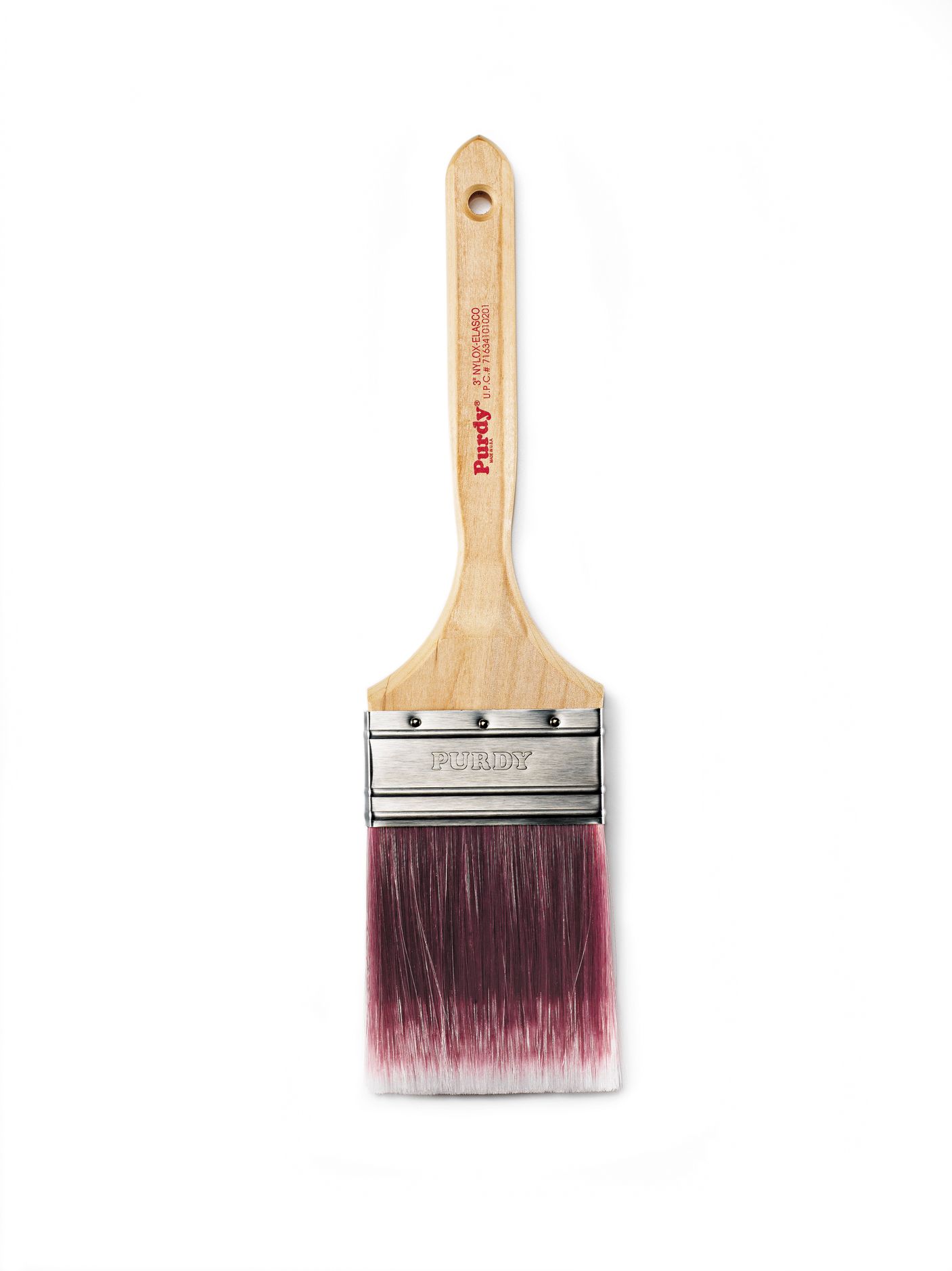
These long-lasting filaments (often the same formula as the ones you find in your toothbrush) stand up to brick or other rough surfaces without breaking down at the tips. But pure nylon brushes tend to get floppy with heat and soak up water from latex paints.
Approximately $25, Purdy
Polyester
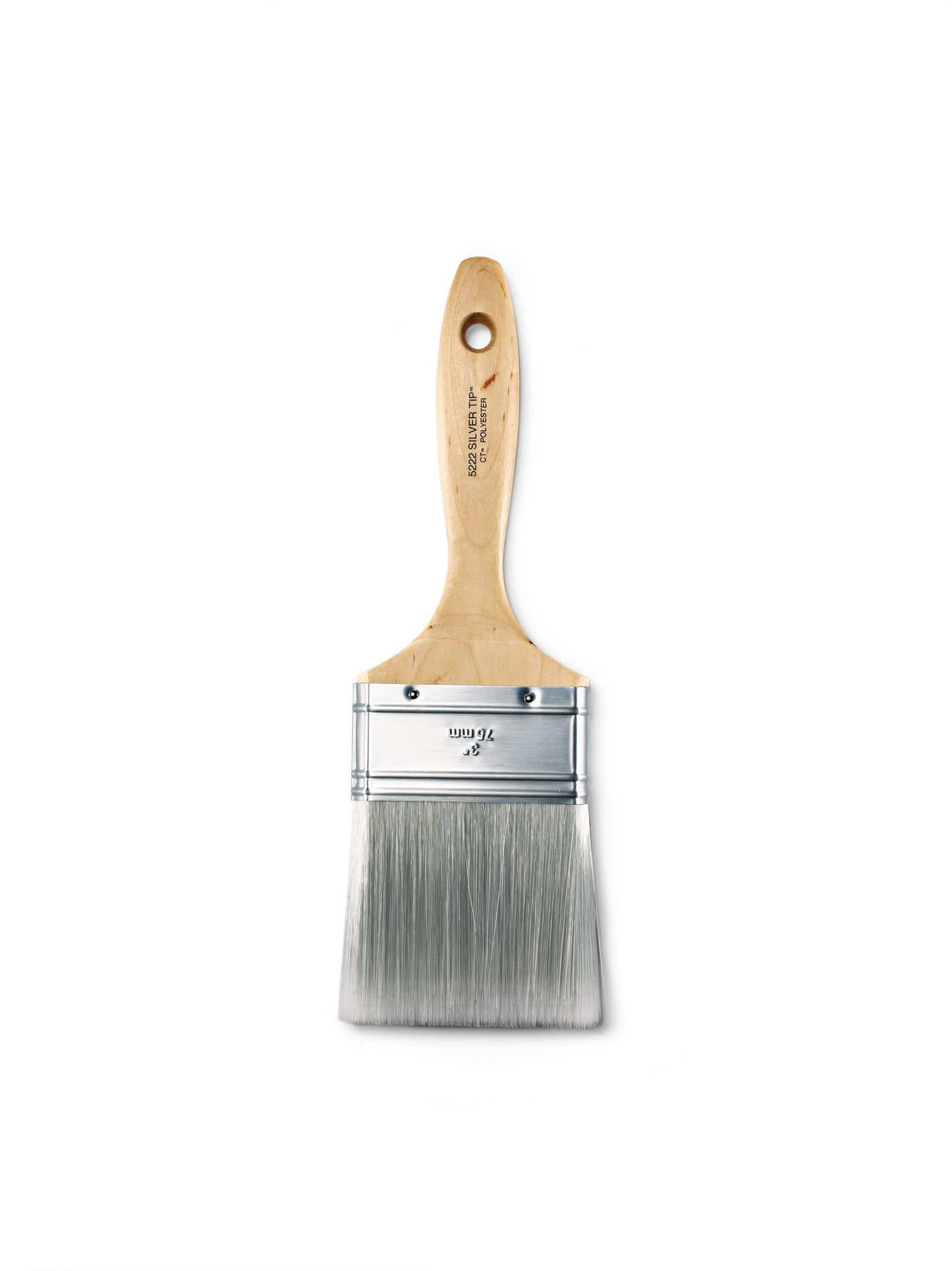
In paintbrushes, as in leisure suits, too much polyester is a bad thing. The stiff, shiny filaments of bargain-bin brushes leave stroke marks, don’t clean easily, and begin to abrade and lose shape sooner than nylon. Here, though, a dip in a chemical bath has softened the polyester’s tips, making a flexible, soft filament that’s ideal for varnish or polyurethane.
Approximately $8, Wooster Brush
Synthetic Blend
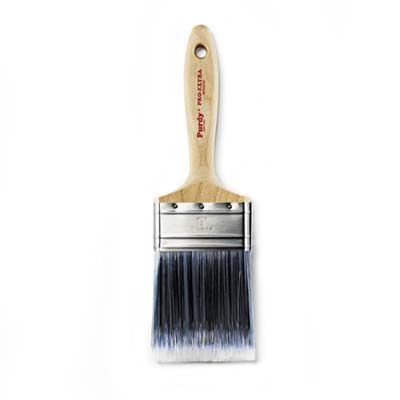
Combines nylon for durability with polyester for firmness. Most are meant for acrylic paints, but this one works on oil as well, thanks to a tough, modified-nylon filament called Chinex that simulates the flagged tips of natural bristles.
Approximately $26, PurdyCorp
Synthetic Shorty
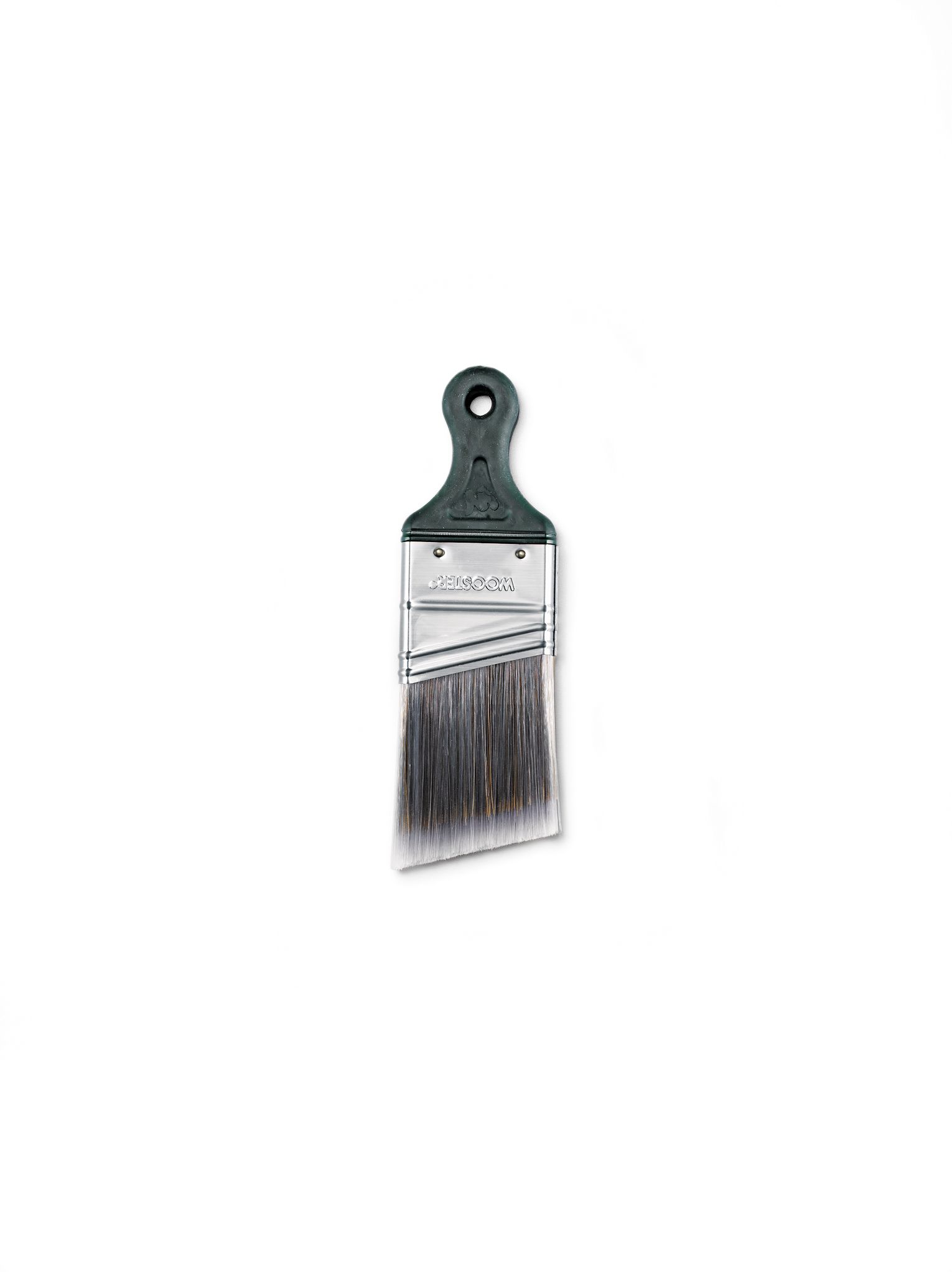
You won’t lose your grip on this handle, despite the fact that it’s less than 2½ inches long, because the flexible elastomeric material resists paint, sweat, solvents, and just about anything else that would slick it up. It actually bends to fit your grip as you guide the ferrule through detailed sash and molding work with latex paint.
Approximately $10, Wooster Brush
Radiator Brush
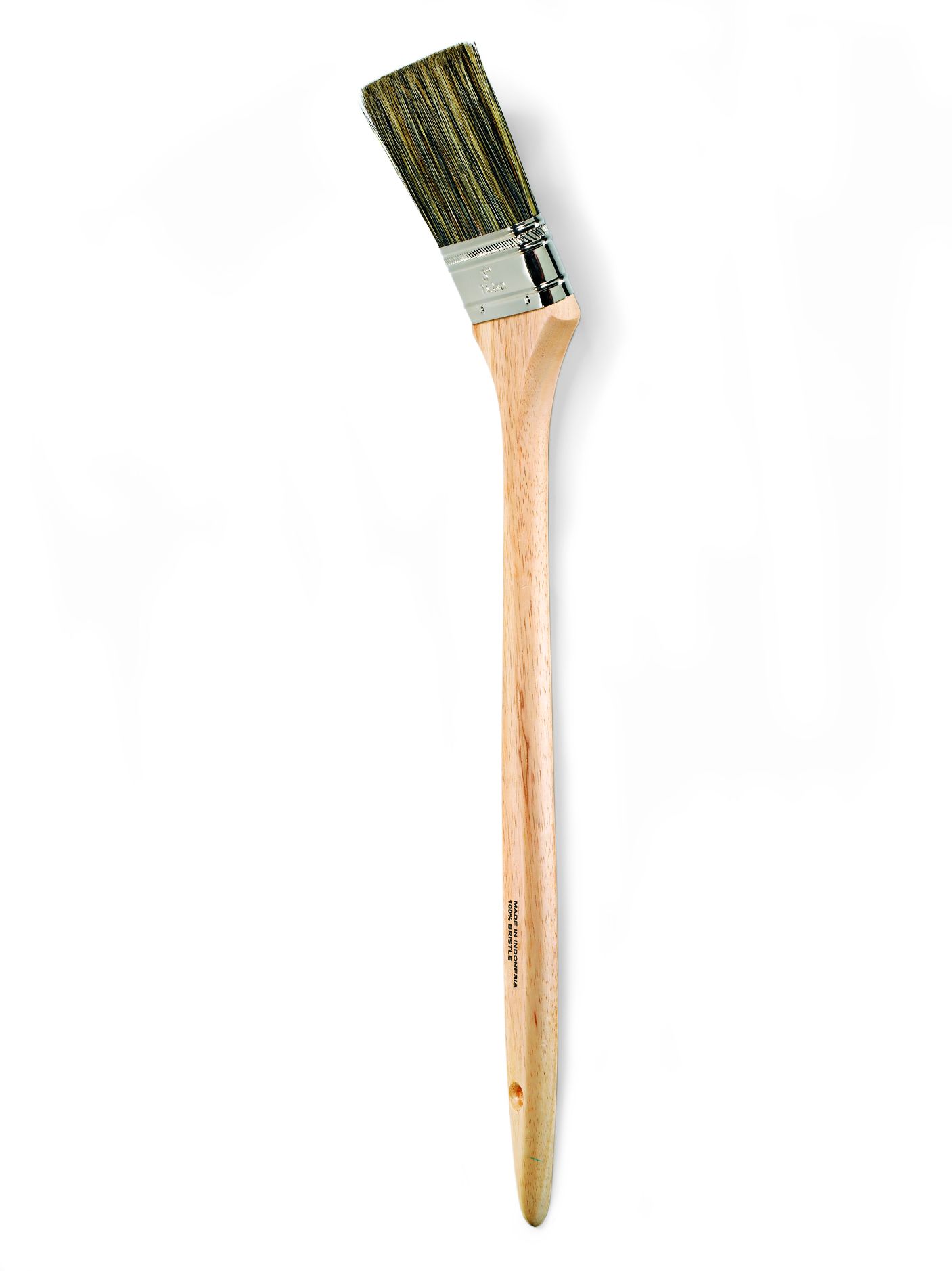
A bent head and a 16-inch handle allow this specialty brush to reach behind the radiator and lay on paint in hard-to-reach crevices. It’s available as a blend of black and white China bristles (shown) or a nylon/bristle blend. In the unusual latter pairing, for oil paint, nylon improves durability, while the bristle leaves a smooth, brushstroke-free finish.
Approximately $17, Bestt Liebco
Angled Sash
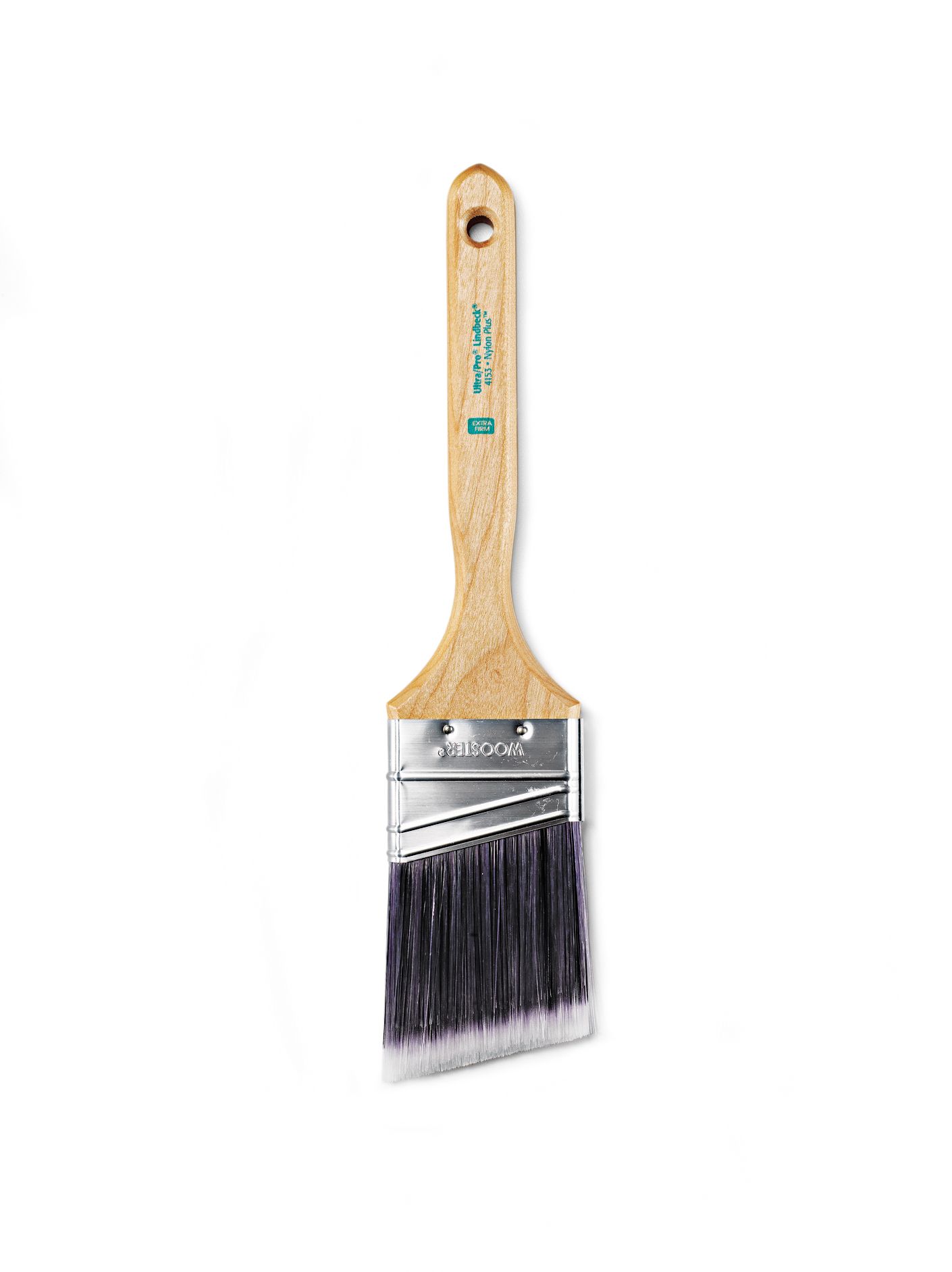
Though this sash brush is pure nylon, its filaments are engineered to stay extra-firm, even in heat or after prolonged use in latex. That firmness is key when using it to make accurate strokes along narrow window parts.
Approximately $12.50, Wooster Brush
Feathery Finisher
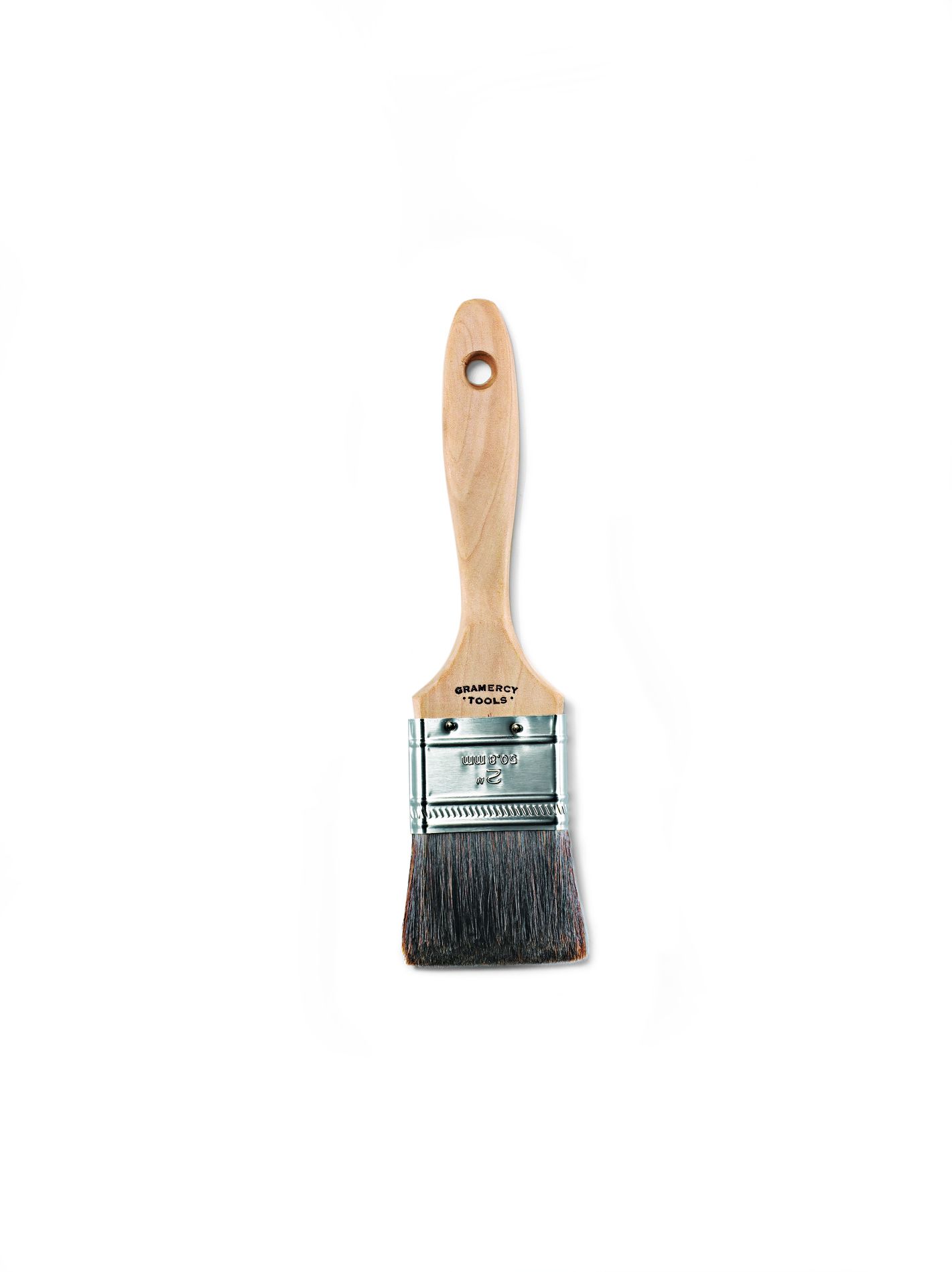
With bristles trimmed from the ears of European oxen, this dense, silky brush leaves a stroke-free finish in shellac or varnish. A pronounced taper at the tip affords excellent control of the amount of finish released; you can adjust the angle of the brush to go from covering wide areas to feathering edges.
Approximately $35, Gramercy Tools, available through Tools for Workingwood
Good Grip
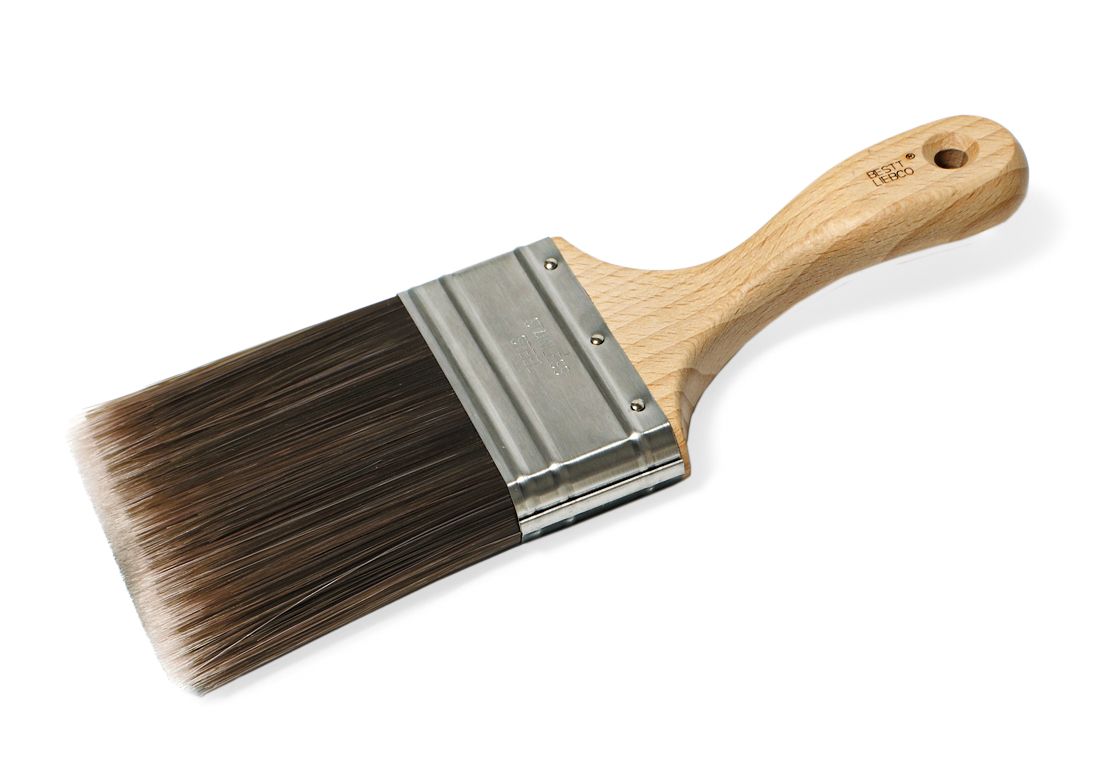
You get the best control when you grip a brush down near the ferrule, but many beginning painters grip their brushes too far up the handle. That’s not a problem with this ergonomic beech handle, which is bent to fit the crook of your hand comfortably. Its blend of polyester and Chinex filaments works with all paints.
Approximately $17, Bestt Liebco
Square Sash
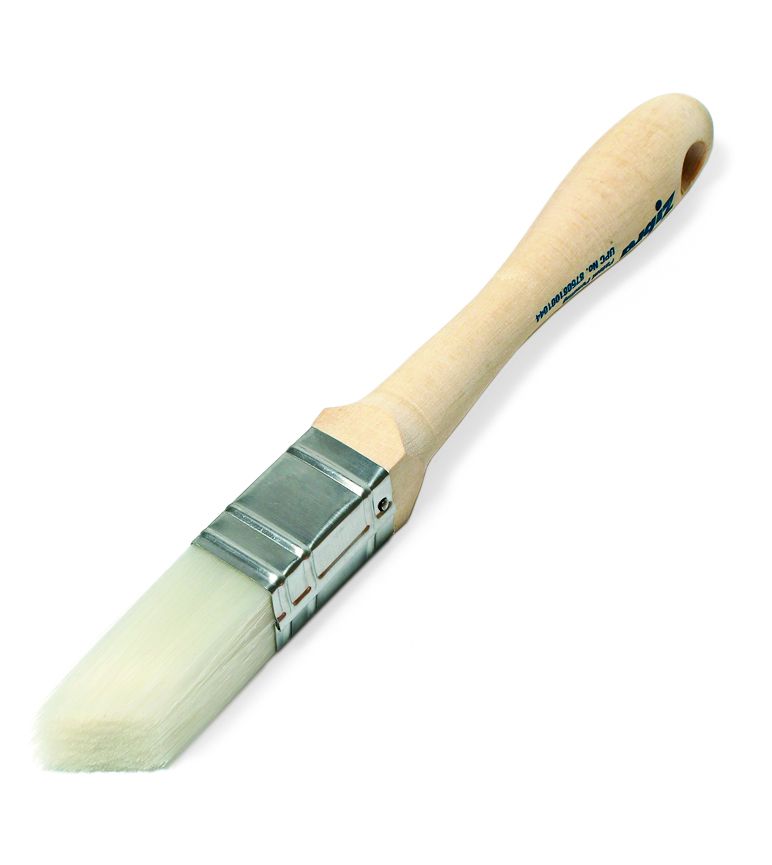
This unique brush, with its polyester filaments bunched into a square shape and trimmed at an angle, is for precise cutting-in on narrow molding—say, the flat top of a chair rail.
Approximately $7, Enjoy Zebra
Euro-Style
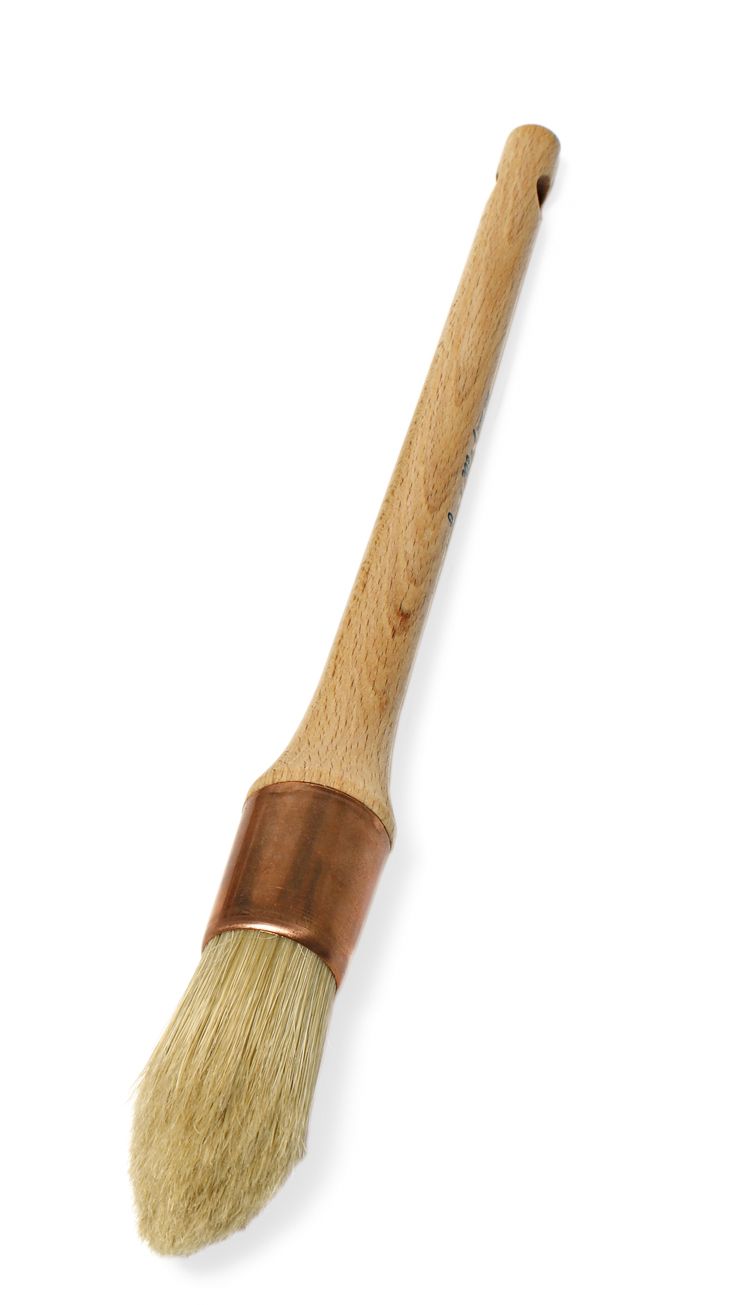
To use this round, Italian-made equivalent of an angled sash brush, rotate the pecan handle as you drag the cone-shaped bristles along a muntin or meeting rail. Its copper ferrule is tightly packed with white China bristles that pick up a heavy load of oil paint.
Approximately $25, Omega Brushworks, available through Fine Paints of Europe
What to Look For in a Brush
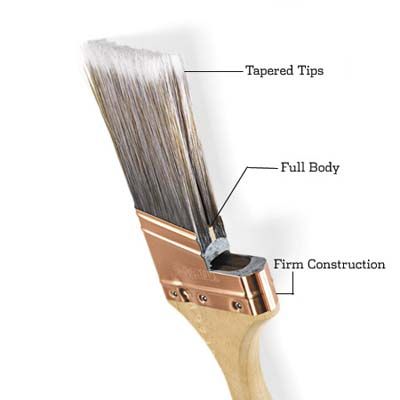
The ultimate test of a brush’s quality is how well it picks up and releases paint. Unfortunately, you can’t check that in the hardware-store aisle, but here are some other things you can look for.
Tapered Tips Look at the brush in profile. The tips should come to a tapered point—this gives you more control because they form into a narrow line as you press the brush against the work.
Full Body The cardboard or wood spacer creates a void that, on good brushes, holds a reservoir of paint. On cheap brushes, thick spacers make up for a deficit of bristles. Pinch the bristles between your fingers near their base. If they feel thin, you’ll be dipping that brush a lot.
Firm Construction Tug on the bristles. If they come out in your hand, they’ll come out in the paint. Ferrules, the metal bands that help hold the bristles in place, should be nailed through the handle and made of rust-resistant stainless or plated steel or copper.
Soft Bristles Touch the tips to your cheek or the back of your hand. Cheap brushes feel stiff and coarse; the feathery, soft ones will apply paint smoothly.
Price A quality brush, one that’s made by hand, runs $10 and up.
